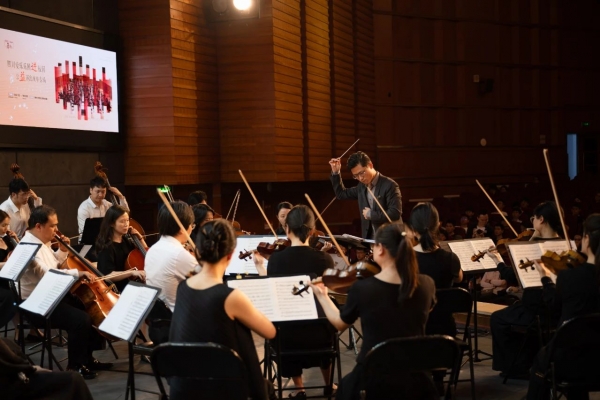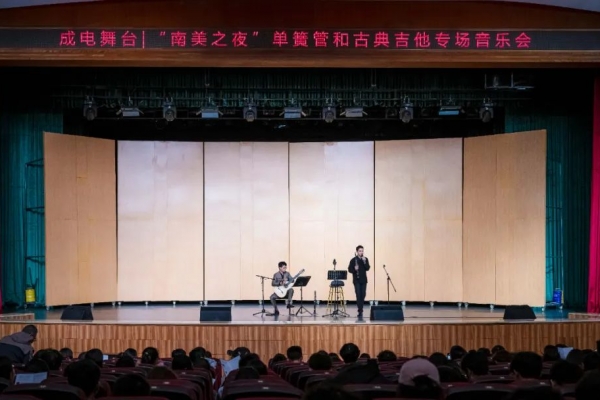即可将网页分享至朋友圈
为搭建我校博士后的学术交流平台,促进学术水平提升,学校博士后管理办公室组织开展博士后学术沙龙活动。本次沙龙由我校博士后杨军、王飞帆、Benjamin分享其研究成果,诚挚邀请感兴趣的师生参加。
一、时 间:2019年4月30日(周二)14:30
二、地 点:清水河校区经管楼宾诺咖啡
三、活动安排:
报告一:
(1)主 题:The function and mechanism of a novel noncoding RNA-FP236383.10
(2)主讲人:杨军 生命科学与技术学院博士后
(3)交流内容:
Tumorigenesis, a complicated process, involves expression alterations of many biomolecules. Pancreatic cancer is a gastrointestinal cancer with higher malignancy. It is mainly origind fron pancreatic ductal epithelial cells, diagnosed and treated with difficulty. FP236383.10 is a novel noncoding RNA discovered in our previous research. Here we focused on the function and mechanism of FP236383.10 in pancreatic cancer cells PANC1 and MIA PaCa2. The main contents and results are as follows: (1) FP236383.10 locates in cytoplasm and nucleus: qRT-PCR detection after cytoplasmic and nucleic parts isolated and fluorescence in situ hybridization results indicated its expression in both parts. (2) FP236383.10 could bind to RPL10 and is stabilized by RPL10: co-localization image predicted the combination of RPL10 and FP236383.10. RNA-IP results further demonstrated their binding. After detected their relation, used antinomycin D to block RNA synthesis whose results indicated RPL10 helped with stabilizing FP236383.10. (3) FP236383.10 participates in pancreatic cancer development (4) FP236383.10 knock-down affects a series of proteins expression.
主讲人简介:
Jun Yang received the Bachelor degree and master degree from LiaoNing University and Ph.D. degree from the China Pharmaceutical University, from Nov 2018, He works as a Postdoctoral Fellow in the School of life science and technology of UESTC. Dr. Yang is working in the field of cancer related protein and mechanism. His main research interests include: oncoproteins, pathway, kinase, miRNA, chromatin modification, genome instability.
报告二:
(1)主 题:Predicting brain age with deep learning from raw imaging data
(2)主讲人:王飞帆 生命科学与技术学院博士后
(3)交流内容:
The human brain changes across the adult lifespan. This process of brain ageing occurs in accord with a general decline in cognitive performance, cognitive ageing. Although the changes associated with brain ageing are not explicitly pathological, with increasing age comes increasing risk of neurodegenerative disease and dementia. Since the effects of ageing on the brain vary greatly between individuals, advancing our understanding of brain ageing and identifying biomarkers of the process are vital to help improve detection of early-stage neurodegeneration and predict age-related cognitive decline. In this talk, we briefly discuss the credentials of brain-predicted age as a biomarker of individual differences in the brain ageing process. Predictive modelling approach based on deep learning, specifically three dimensional convolutional neural networks, has been applied to raw T1-weighted structural MRI data. We will talk about the advances of using deep learning in this task as well as the difficulties and challenges we are facing in the development of the prediction model.
主讲人简介:
Woody Wang received the Bachelor degree from PLA Information Engineering University, Master degree from Nanjing University of Information Science and Technology, and Ph.D. degree from Beijing Institute of Technology, in 2010, 2013 and 2018, respectively. He currently works as a Postdoctoral Fellow in the School of Life Science and Technology of UESTC. Dr. Wang is working in the field of applying deep learning technique to solve brain science problems. His most recent task is to predicting brain age by using advanced image processing deep learning models.
报告三:
(1)主 题:Deep learning approach to head motion detection and correction
(2)主讲人:Dr. Benjamin Klugah-Brown博士后
(3)交流内容:
Since the introduction of MRI/fMRI in studying the human brain, image corruption due to obvious/or more subtle motion artefacts are an everyday challenge to researchers and clinical scientist for the past decades. Many techniques in an attempt to mitigate this image degradation have been proposed. However, most of these techniques lack or are unable to capture subtle and non-linear properties, thus acknowledging the fact that a small shift in the image may have a large consequence on the interpretation of results such as functional connectivity, thus, the correction of motion artefacts from fMRI is nontrivial. The aim of this project is therefore to approach the problem using deep learning method, which shall involves three steps;(1) Generating a motion_field (3-translations,3-rotations and deformation) which will be used for deep learning,(2) applying deep learning architecture with the motion_field and (3) develop a procedure (online /offline) for correction. In this presentation, we will discuss the various none-deep learning methods that have been used to tackle motion correction. Then, introduce the deep learning approaches and initial results including some challenges.
主讲人简介:
Dr. Benjamin Klugah-Brown received his Bachelor degree in computer science from University for development studies, Ghana and both masters (computer science and technology) and Ph.D. Biomedical engineering (Neuroimaging-dynamic functional network connectivity, Epilepsy) degree from the University of electronic science and technology of China, in 2006,2015 and 2018, respectively. He currently works as a Postdoctoral Fellow in the School of life science and technology of UESTC. Dr. Klugah-Brown is working in the field of brain connectivity. His main research interests include deep learning applications in resting-state fMRI, brain connectivity, and interactive application design for neuroimaging.
电子科技大学博士后管理办公室
2019年4月23日
编辑:卜一珂 / 审核: / 发布:陈伟


